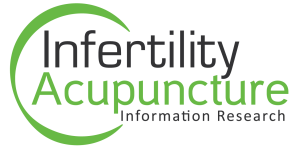Our patients often ask how acupuncture boosts fertility.
One of the ways is by reducing inflammation in the reproductive system.
I recently came across this little study showing acupuncture’s anti-inflammatory effects for pelvic inflammatory disease.
Pelvic inflammatory disease (PID) is acute inflammation in your reproductive organs. It is a complication often caused by STIs, like chlamydia or gonorrhea. With a recent rise in reported STIs cases in New Zealand, there is an increased risk of women developing the pelvic inflammatory disease.
It’s concerning as you may not realise you have PID. Symptoms may be mild, or you may not feel any difference at all. However, if you have symptoms like
- Pain in your lower abdomen;
- Fever;
- An unusual discharge with a bad odor from your vagina;
- Pain and/or bleeding when you have intercourse;
- Burning sensation when you urinate;
- or bleeding between periods,
get yourself checked as soon as possible. It’s important as untreated PID may have major long-term consequences, including ectopic pregnancy, chronic pelvic pain, recurring PID, and blocked Fallopian tubes. As a result, 1 in 8 women with a history of PID have difficulties getting pregnant.
Can you treat pelvic inflammation with acupuncture?
In Chinese hospitals, PID is often treated with a combination of antibiotics and acupuncture. A recent trial looked into the effectiveness of this treatment. Chinese researchers from Foshan Traditional Chinese Hospital recruited 42 women with an acute PID to acupuncture plus conventional treatment group. They compared the effects of the treatment with 37 women who had only conventional therapy. Both groups were treated daily for seven days.
Researchers assessed the inflammatory markers on day three and day seven of the course of the treatment. Both groups were improving. However, in an acupuncture women group got better faster.
The final results on day seven showed that 95.24% of women in the acupuncture group and 81.08% in the conventional treatment group were free of the inflammation.
Results are adding to the base of knowledge that acupuncture is effective in reducing pelvic inflammation. It can be safely used as an adjuvant treatment for PID. Furthermore, it increased the effectiveness of antibiotics freeing women from the potential risk of having difficulties falling pregnant.
However, there are a few issues with this trial. Researchers recruited a relatively small group of women. Results will have to be repeated in a larger study.
There is no detailed description of conventional treatment. The trial is completed in China with an assumption that everybody is familiar with conventional treatment. Some antibiotics are more effective for PID than others so it would be valuable to know what combination of drugs and acupuncture works best.
Unfortunately, researchers didn’t do any long-term follow up to see if women redeveloped PID again and if there is any difference in the groups.
Despite those shortcomings, it’s a neat little study that once again shows how acupuncture is effective for women’s reproductive health. And, a meta-analysis from 2014 shows that acupuncture was effective in treating PID.
Read the abstract below:
[Effect of Acupuncture on Inflammatory Cytokines in Patients with Acute Pelvic Inflammatory Disease].
Wu D, Guo LY, Lu PS
To observe the effect of acupuncture on inflammatory indices and symptoms in patients with the acute pelvic inflammatory disease, and investigate its mechanism.
Seventy-nine patients with the acute pelvic inflammatory disease were randomly assigned to a control group (n?37) given conventional treatment and an observation group (n?42) given conventional treatment and acupuncture therapy.
In the observation group, acupuncture points of Zhongji(CV 3), Guanyuan(CV 4), Zigong(EX-CA 1), Zusanli(ST 36), Sanyinjiao(SP 6), etc. were selected. Each group received treatment once daily, for a total of 7 days.
Tumour necrosis factor (TNF)-? interleukin (IL)-10 and C-reactive protein (CRP) in the serum, white blood cell (WBC) and neutrophil counts, size of pelvic mass and depth of pelvic effusion, and clinical symptoms were assayed pre-treatment and on days 3 and 7.
WBC and neutrophils were significantly decreased after treatment in both groups (P<0.05), and more in the observation group than in the control group (P<0.05). After treatment, the size of pelvic mass and depth of effusion were less in both groups (P<0.05), and the efficacy in the observation group was superior to that in the control group (P<0.05).
In the observation group, serum TNF-? and CRP on day 3 and day 7 was significantly lower than those before treatment (P<0.05). Serum TNF-? and CRP was significantly down-regulated in the observation group compared with those in the control group on both day 3 and day 7 (P<0.05). In the observation group, serum IL-10 was higher on both day 3 and day 7 than that before treatment (P<0.05), and was statistically different from that in the control group on both days (P<0.05).
The clinical efficacy in the observation group was superior to that in the control group (95.24% vs 81.08%, P<0.05).
Acupuncture can regulate the levels of inflammatory markers in patients with acute pelvic inflammatory disease, and improve clinical symptoms.
http://europepmc.org/abstract/med/29383896



